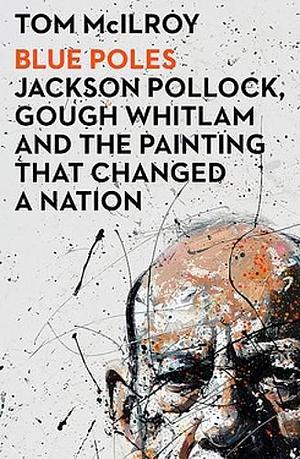
The blurb:
Blue Poles: Jackson Pollock, Gough Whitlam and the painting that changed a nation details how Jackson Pollock rose to fame, the negotiations that led to the artwork's move to the National Gallery of Australia, and the many successes and turbulent turns in between.
This story covers Pollock's entrée into an art circle which included renowned patron Peggy Guggenheim, as well as his relationship with artist Lee Krasner, and the larger-than-life accounts that surrounded his artistic practice - including questions around the creation of Blue Poles.
It was Gough Whitlam's commitment to the arts and cultural capital that would see the painting move to another continent, where the media feasted on stories of its cost and brows were raised over its merit. The value of Blue Poles to the Australian art and museum landscape was yet to be foreseen.
Back in the late 60s/early 70s, Australia—despite long years of lobbying by Australia’s artistic community—did not have a national gallery. In 1967, then-Prime Minister Harold Holt finally announced that a national gallery would be established in Canberra. After some years of wrangling over location and design, construction finally began in 1973 and went until 1981; the building was finally opened in 1982.
One of the things I can remember from around then was a huge kerfuffle about one of the major art acquisitions for the new national collection: Blue Poles, by Jackson Pollock. James Mollison, the fledgling gallery’s director, had offered $1.3m for the painting. He had to seek authorisation from then-Prime Minister Gough Whitlam because of the price: Mollison was only allowed to spend up to $1m on individual works.
Not only did Whitlam authorise the price, he made it public. The price was a world record for a contemporary American painting and it fuelled the perception of the Whitlam government as financially irresponsible. I won’t say it brought down a government—but it certainly added to the public perception.
The book is a combined biography of Jackson Pollock and examination of the Blue Poles purchase. On the biographic side, it’s thorough—but there’s not really a lot new to uncover. McIlroy has sourced extensively from other biographies and reportage, so it feels rather synthesised.
I found myself wanting more from the Australian side. I really wanted to know more about the background of the purchase—Whitlam’s deliberations on whether or not to authorise the purchase, Mollison’s considerations of making such a major buy when he was, technically, only the acting director of the gallery, the reaction of the public, the media coverage, the reaction from within Whitlam’s government…these are touched on, but it feels like there’s more depth there to be uncovered. It’s a short read as is, so going more in-depth on angles like that would have made a more satisfying read, I think.
Started: 20 June 2025
Finished: 23 June 2025
Back home.
More books.